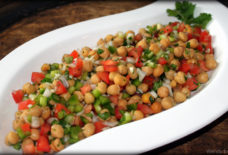Middle east? North Africa? MENA? What Does it all Mean?
By: Nouha Elyazidi / Arab America Contributing Writer
Have you ever heard someone use the term the Middle East, Muslim, or Arab? What about the acronym MENA or the word Arabic? Chances are you have, but sometimes the terminology associated with this region can be confusing. Let’s take a deeper look at what it all means.
Let’s start with geographical regions. The Middle East refers to a geopolitical area, but the borders are not always clear. Some perceive the Middle East as encompassing parts of North Africa such as Egypt and Libya and spanning all the way to Iran and Turkey. Others only consider the Middle East strictly the Arabian peninsula. There are discrepancies on the exact countries involved, but the region is named after its location, the Middle of the East. North Africa differs in that it has a physical boundary, the Sahara desert. North African countries are countries in Africa north of the Sahara desert.
Now that we know the geographical regions, let’s talk about the difference between them. The umbrella term used for both the Middle East and North Africa is the acronym “MENA.” The regions are often grouped together due to their similarities in language, religion, and certain cultural elements, but despite their similarities, they differ greatly.
The Middle East and North Africa can be broken up even further into regional subsections. These subsections typically have historical significance and the countries involved tend to overlap from cultural and linguistic standpoints. The Levant area is a historical-geographical region with the countries of Lebanon, Syria, Palestine, and Jordan. North Africa has the Maghreb region, made of Mauritania, Morocco, Algeria, Tunisia, and Libya. The last main region is the Gulf, the Gulf region has Oman, The United Arab Emirates, Qatar, Kuwait, Bahrain, and Saudi Arabia.
There are over 60 languages spoken in the Middle East and North Africa, the most common being Arabic. The majority of MENA countries are Arab countries, but what do Arab and Arabic mean? Arab countries are nations where the official or primary language is Arabic. Arabic is a noun or adjective referring to the actual Arabic language, and Arab is an adjective used to describe a noun. So an example in a sentence would be “Khadija speaks Arabic, she is of Arab descent” or “Hisham listens to Arabic music at the Museum of the Arab World in Paris.” See the difference? If you hear the term “The Arab World” it is referring to Arab countries. There are 22 Arab countries; Mauritania, Somalia, Morocco, Algeria, Tunisia, Libya, Egypt, Sudan, Palestine, Lebanon, Syria, Iraq, Jordan, Saudi Arabia, Kuwait, Qatar, the United Arab Emirates, Bahrain, Oman, Djibouti, Comoros, and Yemen.
So what about the non-Arab countries of the Middle East? The countries in the Middle East that are non-Arab because their official language is not Arabic, are Turkey and Iran. These countries have their own official languages, Turkish the official language of Turkey and Persian is the official language of Iran.
The Middle East and North Africa are incredibly diverse, consisting of indigenous populations, ethnic groups, and religious groups. Just a few of the ethnic groups within the MENA region are Arabs, Kurds, Persians, Turks, Assyrians, Circassians, and the Yazidis. A few of the native populations include the Amazigh (native to North Africa), the Bedouin (native to the deserts of the Arabian Peninsula), Aramaean (native to modern-day Syria), and the Mazanderani (native to the Caspian region of Iran). Some religions in the Middle East and North Africa are Shia Islam, Judaism, the Druze Faith, Sunni Islam, the Baha’i Faith, Christianity, Yazidism, and Shabakism. Needless to say, the Middle East and North Africa are very diverse both ethnically and religiously.
Each country in the Middle East and North Africa, even the Arab countries, are unique in their language, history, and culture. If we look at Morocco, for example, they speak a dialect of Arabic called darija. Darija is very different from other dialects, says the Iraqi dialect, in letter pronunciation and vocabulary. And the culture of each of the countries differs greatly. For example, Algerian wedding traditions, dishes, and popular culture are different from these cultural elements in a Gulf country like Kuwait. Every country in the Middle East has its own unique offerings and are all absolutely worth exploring!
In learning about the MENA region, it is important to debunk some of the assumptions and stereotypes associated with the area and its inhabitants. First, is the idea that everyone in the Middle East is Arab and Muslim. As demonstrated, this is a false statement, for not all Arabs are Muslims, not all people from the Middle East and North Africa are Arab, and not all Muslims are Arab. Another assumption often made about the region is that there is little diversity, that all the same culture spans across the entire region. This is absolutely untrue because of the ethnic diversity of the MENA region. Not only are there a lot of ethnicities, but there is also a wide range of cultures and religions within each country, region, and ethnic group.
So now we have covered the MENA region, the ethnicities and languages of the Middle East and North Africa, the distinct features of all the nations in the Middle East and North Africa, and we have even debunked stereotypes about this region. The significance of discussions about this region is the representation it provides. The MENA people are a unique group that has been historically underrepresented, so learning more about this region simply through the terminology is a great step in furthering education and understanding about it!
Check out Arab America’s blog Here!








